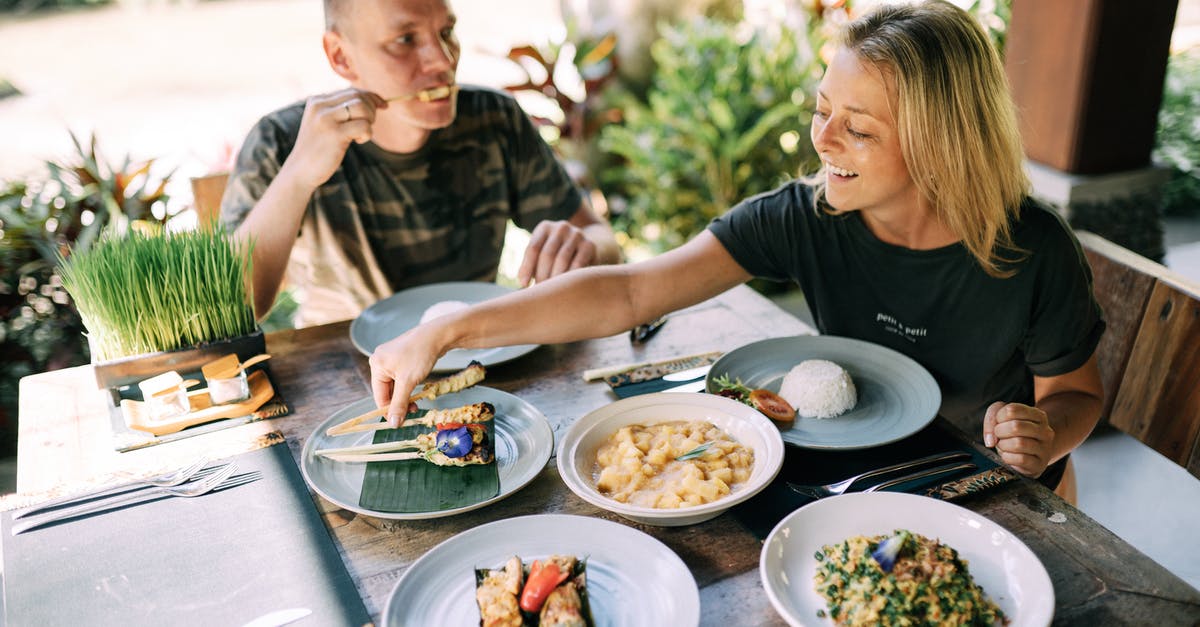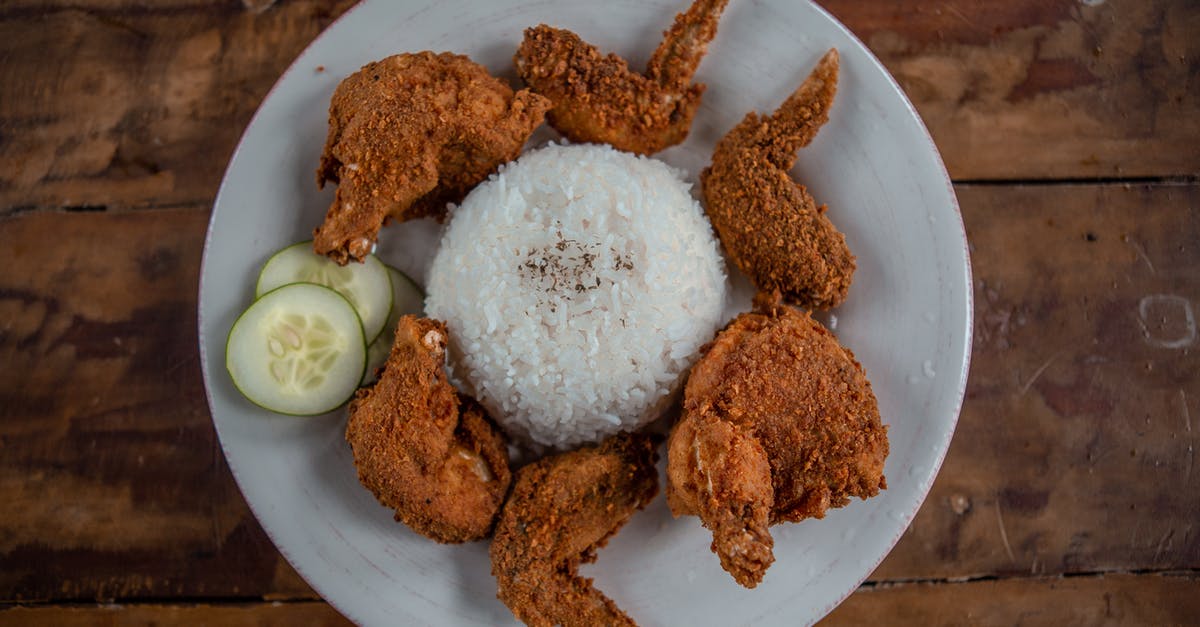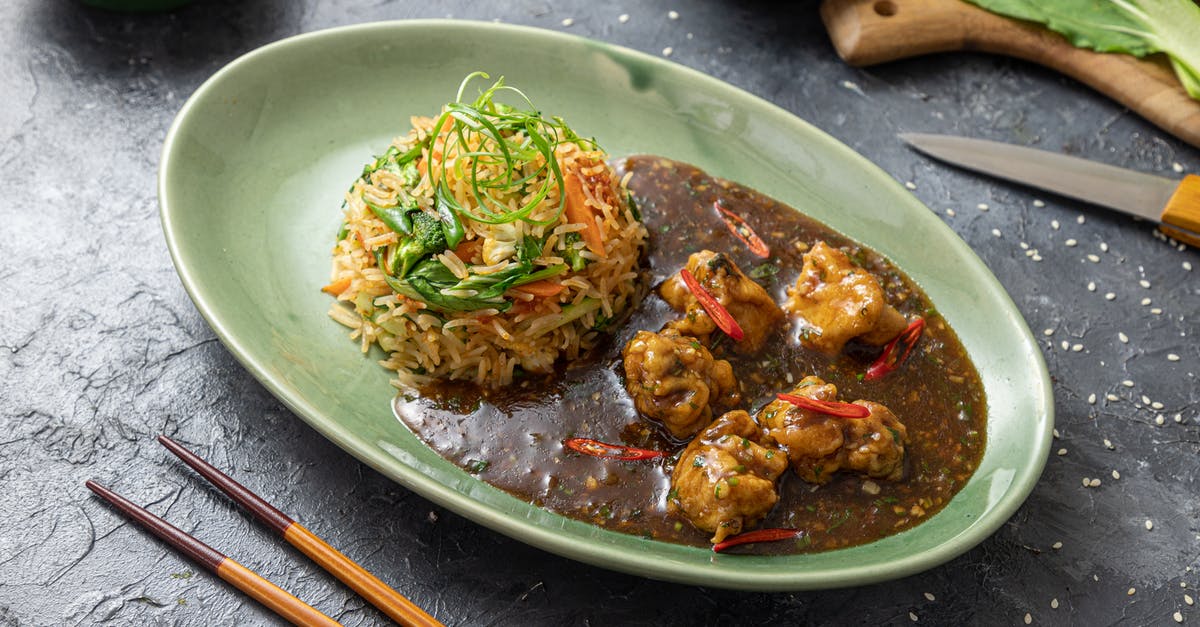Reducing the moisture in cooked rice for making fried rice

I am aware that in order for fried rice in Asian dishes to have the typical consistency and texture, it is best to use rice that has been cooked and stored for at least 24 hours.
However, it's often difficult for me to plan anything a day in advance for certain reasons, and so I was wondering if there are any tricks to either improve the texture, or to speed up the process that happens to the rice, that reduces the moisture?
(Should it be relevant, I cook the rice in a rice cooker, using a cup of rice and 1.5 cups water. I have tried using less water than advised, but understandably this produces an unpleasant result.)
Best Answer
Kenji López-Alt from Serious Eats dealt with the exact same issue (section Rule #2: plan in advance if you can, but don't worry if you don't). To sum up his findings:
- Rice only need to be dry, not stale (hence making rice one day in advance is not necessary)
- Drying the freshly cooked rice by spreading it on a tray and putting it under a fan for one hour does the trick. Kenji's recommends this method (even more than day old rice!)
- If you don't have an hour to wait, you can spread still hot rice on a tray and let the surface moisture evaporate.
- Day old rice makes excellent fried rice (stored at least 12 hours are ideal) but it tends to clump. Internally it is dryer than fresh rice which makes stir-frying at bit more difficult because you have to be faster to ensure the rice does not dry out.
Besides the time factor: Make sure to rinse the rice well to remove as much surface starch as possible to prevent clumping.
But here's the thing: even freshly cooked rice worked great. In fact, it worked better than rice that had been stored loosely covered in the refrigerator for 1 to 6 hours.
[...] Freshly cooked rice spread out on a plate will steam a great deal as its surface moisture is evaporated. That's the important part. It's the surface moisture that is going to cause your rice to rapidly suppress the temperature of the wok. It's the surface moisture that's going to cause your rice to stick together.
That explains why fresh rice and rice that's been placed underneath a fan work well. With rice placed in the refrigerator, on the other hand, you slow down the evaporation process. Meanwhile, internal moisture from the grains will start to move outwards, adding moisture to the surface of each grain and making them more difficult to fry. Eventually that surface moisture will evaporate again and the rice will become easier to fry.
If you use much less water than actually needed to cook the rice, you'll rather end with dry undercooked rice than just with dry rice.
Pictures about "Reducing the moisture in cooked rice for making fried rice"



Quick Answer about "Reducing the moisture in cooked rice for making fried rice"
Drying the freshly cooked rice by spreading it on a tray and putting it under a fan for one hour does the trick. Kenji's recommends this method (even more than day old rice!) If you don't have an hour to wait, you can spread still hot rice on a tray and let the surface moisture evaporate.Eight guidelines to prepare the rice before making fried rice
More answers regarding reducing the moisture in cooked rice for making fried rice
Answer 2
Actually there is another way to make fried rice from freshly cooked rice. I would agree that a slightly drier rice makes for better fried rice, also long grain rice is the traditional rice of choice. But if you don't have time, or have short grain rice, here is a way to make fried rice. It can sometimes be called "golden fried rice", as the rice looks more yellow than brown when done correctly.
I am sometimes asked to make some fried rice in a jiffy and by simply beating up some eggs and mixing it with the freshly cooked rice, you can make really good fried rice. What the eggs do is to coat the cooked rice grains, which prevents them from turning too mushy or sticking to each other when the starch starts getting hot.
By coating the rice with the egg you prevent the sticking and also drying out too much when cooking. Use just enough beaten egg to coat your rice, but not too so much that it's too wet. You can save the rest of the beaten egg for the fried rice. So you will still need a good well seasoned wok/pan and some pretty high heat, to make a proper fried rice. Also some arm strength to toss that rice to cook it evenly.
Once the rice has cooked a bit you can start adding whatever you want to the pan to make it your recipe. I like a simple dish of sliced chinese sausage, tons of green onion, more of the beaten egg, some salt, white pepper, touch of sugar and just a splash of soy sauce and/or some oyster sauce to add just a bit of richness. If done right the fried rice will be soft, moist and delicious I hope.
Answer 3
for the quick way lay out the rice in a thin layer on the counter with a baking sheet or some other material. let it sit for about 30 minutes. then portion the rice and freeze in a zip-lock for a few hours. Personally when i want to make fried rice in particular i will cook it with a 1:1 ratio with water. you would believe it under cooked, but in my personal experience it wasn't as uncooked as you think the lack of water actually made the rice dry much quicker and i still got the same result once finishing the rice with the rest of the ingredients on its second run in with the stove. I worked under a Thai chef and have cook hundreds of pounds of fried rice when i was younger, (Disclaimer he was thai) and he knew a lot of secrets to properly preparing many of his dishes, sadly he was not one to share, but i do recall he with cook the rice at 1:1 and not use it until the next day.
ALSO make sure you clean the rice very very well, until the clouded water is clear, a trick i was taught was to place your hands together with the rice in between and shuffle your hands like you would in front of a camp fire. the will take away any under cooking problems and you'll have the cleanest most white rice ever.
Answer 4
I find if I steam a long grain rice in a bamboo steamer it comes out dry.
Sources: Stack Exchange - This article follows the attribution requirements of Stack Exchange and is licensed under CC BY-SA 3.0.
Images: Yan Krukov, James Ampong Quilario, Kai-Chieh Chan, Momo King
